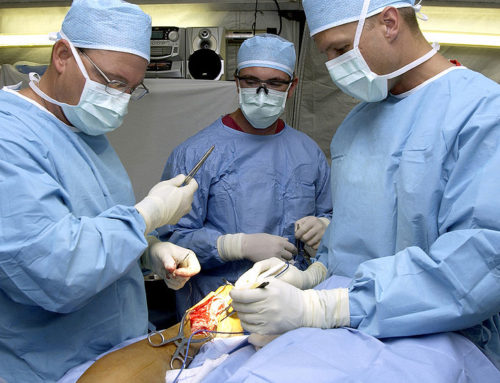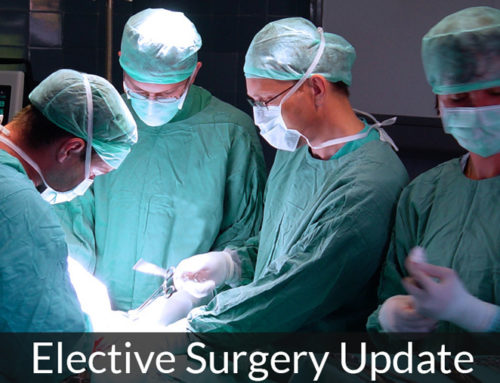- COPS acknowledges the PCRR’s observations (pg 1) that “Australians have among the highest life expectancies in the world – including when disability adjusted for years of good health. Yet total of health care spending as % of GDP is not overly high by advanced OECD standards”.
- COPS agrees with the PCRR (pg 1) that, “These outcomes are due in no small measure to the expertise and commitment of Australia’s health workforce and that of various professional and representative bodies in the health, education and training sectors which contribute both directly and indirectly to the delivery of health services”
- COPS regrets the admission by the PCRR (pg 387) that it was unable to fully assess health sector productivity and efficiency, “overall, currently available information does not support the full assessment of health sector productivity and hence the efficiency of health service provision.”
- COPS commends the report (pg xv1) for identifying that there are also some 200,000 administrative and service workers employed in the health services.. COPS believes this explains to some degree observations of its members of a growing bureaucracy at every level of the health workforce.
- COPS regrets that the PCRR (pg 15) was unable in its terms of reference to examine the productivity issues flowing from health policy and health funding. Hence public hospital funding arrangements were not part of the report despite this being an area that clinicians believe directly inhibits their productivity and is responsible for under-utilisation of skilled medical practitioners including proceduralists.
- COPS acknowledges the PCRR admission (pg 339) that, “In comparison to most other OECD countries, Australia does not appear to be significantly undersupplied with health workers. For example, on a doctor to population basis, Australia is not markedly behind in regard to practising medical practitioners – though the distribution of these practitioners between general practice and other specialties is different” and that (pg 334) “Australia’s (paid) health workforce has been growing considerably faster than the population (11% nearly double the population growth of around 6%). Medical professionals 12.6% (1996-2001), registered nurses and midwifes 7.3% (1997 – 2003). Furthermore (p.338) medical school commencements of Australian citizens and permanent residents increased by 90% or 800 places (1995-2004), specialists in training similarly increased by around 700 (2000-2003), a rise of 14%.
- COPS is pleased that the Commission has acknowledged (pg 10) the speculative nature of all workforce forecasts and the perils of basing decisions on same. “Of course attempting to predict the future is fraught with danger while broad trends can be identified, the ways in which these trends will interact and play out are often unclear” furthermore on (pg 11) Identifying ‘shortages’ in workforce supply is not straightforward, especially given the difficulty of establishing underlying health care demand and an appropriate level of workforce response, and the extensive involvement of governments in delivering or otherwise influencing the level of resources provided to meet that demand.
- COPS acknowledges the admission by the PCRR (pg xv) that it does not have expertise in matters of clinical judgement “moreover the Commission does not profess expertise in relation to specific workplace requirements, matters of clinical judgement or particular approaches to health workforce education and training.” Furthermore the PCRR acknowledges (p. 58) “enhancing the ability of nurses to substitute for doctors in some roles could exacerbate an existing nurse shortage”.
- COPS believe the Commission’s endorsement of task substitution is surprising given its admission (point 3) that it was unable to fully assess health sector productivity and efficiency. Furthermore, the motives of those vigorously advocating this approach remain untested and uncertain. COPS has publicly expressed its concern at any attempt to lower the standards of anaesthesia by substituting nurse practitioners for medically trained anaesthetists. These standards have been achieved by dedication and skill. The Commission should not assume that these standards would be maintained despite major alterations to the safeguards patients presently enjoy. The Medical profession has a long and deserved history as leader in the teaching and practice of all branches of the medical care of patients. Doctors value the work and contributions to patient care given by nurses and allied health professionals but are part of a separate profession which must remain separate in its teaching, practice and regulation to ensure best patient care and outcome. Whilst there are lesser standards elsewhere Australians are entitled to the best.
- COPS believes that many of the proposals of the PCRR are simply rearranging the bureaucracy and advocating special interest changes without the assurance of significant productivity improvements.
Dr Don Sheldon, Chairman,
Council of Procedural Specialists
9 February 2006
Council Of Procedural Specialists
PO Box 12, ARNCLIFFE NSW 2205
Telephone: 02 9567 7329 Facsimile: 02 9567 4681





